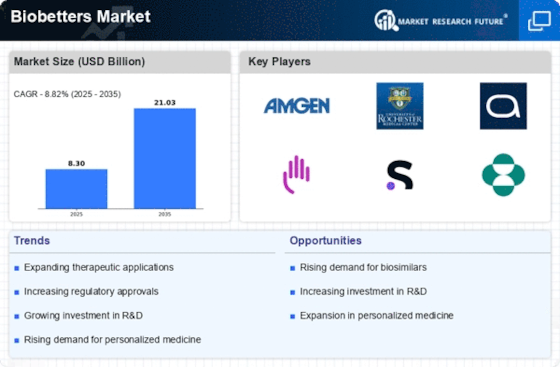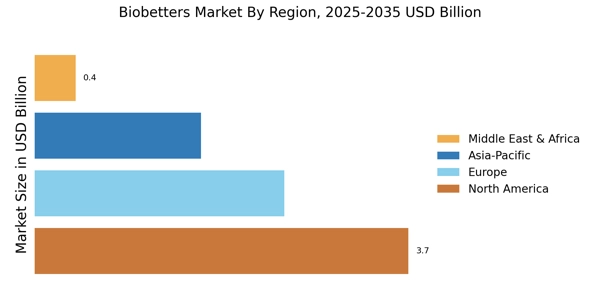Regulatory Support for Biobetters
The Biobetters Market benefits from increasing regulatory support aimed at facilitating the development and approval of biobetter products. Regulatory agencies are recognizing the potential of biobetters to provide improved therapeutic options, leading to streamlined approval processes. For instance, the introduction of guidelines that encourage the development of biobetters has been observed, which may reduce the time and cost associated with bringing these products to market. This supportive regulatory environment is likely to foster innovation and investment in the Biobetters Market, as companies are encouraged to explore new formulations and delivery methods that enhance the therapeutic value of existing biologics.
Growing Patient Awareness and Advocacy
Patient awareness and advocacy are playing a crucial role in shaping the Biobetters Market. As patients become more informed about their treatment options, there is a rising demand for therapies that offer improved outcomes and fewer side effects. Advocacy groups are increasingly promoting the benefits of biobetters, which are perceived as a promising alternative to traditional biologics. This heightened awareness is likely to influence prescribing practices, as healthcare providers respond to patient preferences for more effective and safer treatment options. Consequently, the Biobetters Market is expected to expand as it aligns with the evolving expectations of patients seeking better therapeutic solutions.
Rising Demand for Enhanced Therapeutics
The Biobetters Market is experiencing a notable increase in demand for enhanced therapeutics that offer improved efficacy and safety profiles compared to existing biologics. This trend is driven by the growing prevalence of chronic diseases, which necessitates more effective treatment options. According to recent data, the market for biobetters is projected to reach USD 30 billion by 2026, reflecting a compound annual growth rate of approximately 12%. This surge is indicative of the healthcare sector's shift towards therapies that not only manage symptoms but also address underlying disease mechanisms. As patients and healthcare providers seek better outcomes, the Biobetters Market is poised for substantial growth, with a focus on innovative solutions that enhance patient quality of life.
Increased Investment in Biotech Research
The Biobetters Market is witnessing a surge in investment directed towards biotechnology research and development. Venture capital and public funding are increasingly being allocated to projects focused on biobetters, reflecting a growing recognition of their potential to transform treatment paradigms. This influx of capital is expected to accelerate the pace of innovation, leading to the emergence of novel biobetter candidates that address unmet medical needs. As research institutions and biotech firms collaborate to explore new therapeutic avenues, the Biobetters Market stands to benefit from a robust pipeline of products that could reshape the landscape of biologic therapies.
Advancements in Biomanufacturing Technologies
Technological advancements in biomanufacturing are significantly impacting the Biobetters Market by enabling the production of more complex and effective biologics. Innovations such as continuous manufacturing and improved cell culture techniques are enhancing yield and reducing production costs. These advancements not only facilitate the development of biobetters with superior properties but also contribute to the overall sustainability of the manufacturing process. As companies adopt these cutting-edge technologies, the Biobetters Market is likely to see an influx of new products that meet the evolving needs of patients and healthcare providers, thereby driving market growth.


















Leave a Comment